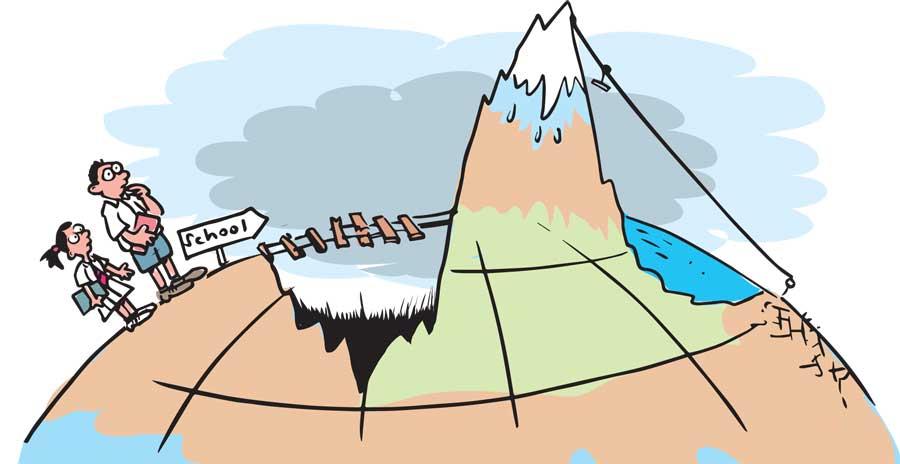Reply To:
Name - Reply Comment

The ferry tragedy in the Kuringankerni Lagoon on Tuesday underscores the fact that some journeys to school in Sri Lanka aren’t safe to say the least. As many as six people died in that incident and several others were hospitalised. And what’s hilarious is the government quickly choosing to palm the blame on the local government authority an wash its hand off when it comes to taking responsibility. The local government authority here is governed by appointees of the Samagi Jana Balawegaya and Sri Lanka Muslim Congress.
The clear message from that incident when reading newspaper accounts of that tragedy is that people tend to find solutions to their problems when government authorities fail to deliver. The tragedy took place when commuters were travelling from Kurinchakerni to Kinniya by ferry because they didn’t have the option of using a government constructed bridge, connecting the two towns, which was closed for repairs.
Politicians in Sri Lanka will do their rounds and work for the betterment of people in areas where their votes are assured. We’ve seen areas where people commute by foot because of no roads at all or because roads have remained in dilapidated conditions for aeons.
Ferry tragedies are rare in Sri Lanka; hence the hardships that children encounter when utilising a transport facility associated with water also doesn’t get highlighted. That doesn’t mean that for some children the journey to school is easy. If you read reports from around the globe children experience much difficulty to reach school because state maintained transport facilities are non-existent.
A Google search showed how students in Pangururan, Indonesia travel to school crammed inside a boat. In Cambodia students are forced to move through the air on a steel cable fixed 400 metres above the earth. Indonesia offers the biggest challenges to schoolchildren making them walk across tight ropes, temporary bridges made of bamboo shafts and even damaged suspension bridges. In Zhong Jaiwan, China students are made to use unsecured wooden ladders partway through their journeys to school. And that story is not complete if we don’t highlight one from Sri Lanka where students are seen walking dangerously across a plank placed on the wall of the 16th Century Galle Fort. The caption of the picture from Sri Lanka tells it all. It reads, ‘At least they have each other for support’.
Back in Sri Lanka that earthshattering incident took place because the bridge that connects two towns was not available for use. We need to think deeper and see why government and state officials cannot connect with the people. We hear that following the ferry incident the Member of Parliament having authority in the area had to face the wrath of the villagers because the latter thought that the authority in power had failed to look into the welfare of the people. People in the area have even staged a protest and their attempts are to blame the authorities for not having a programme to prevent such tragedies.
People in the area have also come under the spotlight because commuters in the ferry either refused to wear lifejackets or chose to travel in a ferry where such gear was not presented to passengers. A government minister has said in parliament that people use the ferry as an alternative because the journey via the bridge is 3 km longer. Are we seeing a set of villagers who have no foresight and discipline because they attracted misfortune due to their own decision making?
Anyway the journey to school must not be open to extreme dangers just because schooling is a must. Just like affluent mega companies insisting on solid roads if they are to invest on projects in other countries principals and teachers must insist from the government that they’ll accept appointments to remote schools only if transport facilities are safe and maintained by the state on a regular basis. Probably it’s time to rethink how we reminisce the past when we do say, ‘During our time we walked to school on a rickety bridge to get to school because we didn’t have modern transport facilities the new generation enjoys’. We must hang our heads in shame if we had a past like that!